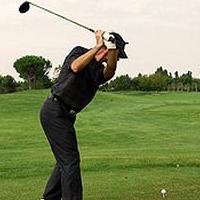Week 6 always felt like a measuring post for the TGL. So, where do things stand with the league’s TV viewership on ESPN? Here’s the latest. The post TGL TV ratings check-in: Who’s watching the new league in week 6 appeared first on Golf. Week 6 always felt like a measuring post for the TGL.…
‘1 of the biggest lies in golf’: Top 100 teacher seeks to correct ‘myth’

GOLF Top 100 Teacher and Jordan Spieth’s coach, Cameron McCormick, seeks to correct a swing “myth.” “One of the biggest lies,” he said.
The post ‘1 of the biggest lies in golf’: Top 100 teacher seeks to correct ‘myth’ appeared first on Golf.
GOLF Top 100 Teacher and Jordan Spieth’s coach, Cameron McCormick, seeks to correct a swing “myth.” “One of the biggest lies,” he said.
The post ‘1 of the biggest lies in golf’: Top 100 teacher seeks to correct ‘myth’ appeared first on Golf.
Cameron McCormick calls it “one of the biggest lies in golf.”
And “one of the most common misconceptions.”
And “quite frankly a pet peeve.”
His frustration is clear then. But the GOLF Top 100 instructor and Jordan Spieth’s longtime coach hopes his explanation is too. In short, McCormick said on a recently shared video to his YouTube channel that a player shouldn’t play with “steady legs” during short-game shots. They should move.
There were some parts to his thought. A short game shot, McCormick said on the video, should marry movement among the club head, the upper body and the lower body. That said, what happens, though, when that doesn’t happen?
Problems, he said. Various mishits. You’re locked up.
“You end up delivering very rigid motions to impact,” McCormick said on the video, “you lose rhythm and quite frankly you lose the position in space that the clubhead should be moving through and to.
“The lesson there then is that when you’re making your practice swings, you should be implementing some sense that there’s some leg movement, some foot movement, the pressure largely moving on a low trajectory shot through that lead leg, through that lead foot, and allowing that trail foot to marry together with it.”
Is there a way to practice the feel? There is, and it’s here where you should watch the video below, and below the video are some thoughts.
In the video, the right-handed McCormick took a lob wedge and placed the clubhead under his right foot. On a short-game swing, the trail heel rises, demonstrating lower body movement, while the club falls to the turf. Pressure applied to the legs is dependent on the shot type.
“That would be true for low chip shots, as I demonstrated there,” McCormick said on the video. “It will be just as true for mid-trajectory pitch shots. … This will be me performing that same movement with a pitch with that shaft hitting the ground there. And it is just as true when we get to more lofted shots. …
“The only change — we still have that marriage of movement with our lower body being fluid and rhythmic and moving — the only change would be where we place that pressure at address, but all of them would increase pressure in the forward leg throughout the overall stroke. So we go back to our low-trajectory chip shot, I’ve got 80, 90 percent of pressure on that lead leg, that marriage of movement that allows this club to hit the ground over here that was underneath my trail heel would then move all of my pressure up over my lead side — I mean, I got probably 5 percent back on that trail foot. Then that mid-trajectory pitch, I’m now starting 60/40, but during the stroke, I’m progressing again to 90, 95 percent on that lead leg. And now when I go to a full flop, I’ve got 50/50 and then during the stroke you can see what’s happened — released under it, nice spinning shot, landed by the flag. I’ve actually let that pressure shift during the stroke such that that club hits the ground.”
On the video, his frustration sounded gone. Did the author try it? He did (with some dry swings in his living room). I had some lower body movement, to where the club slightly moved, but needed more for it to fall.
“So now we’ve busted that myth that your lower body should be steady, should be stable up in all of these short game shots,” McCormick said on the video. “It’s going to help you develop more rhythm, more precise contact at the bottom of the swing arc because when you’re allowing your pressure to move through letting your legs move, you’re letting the low point of the swing arc and therefore the landing point of the club to move towards the target. It’s going to help you alleviate that fat contact and just a whole range of poor errors as you try and abort out of that potential fat contact.”
The post ‘1 of the biggest lies in golf’: Top 100 teacher seeks to correct ‘myth’ appeared first on Golf.